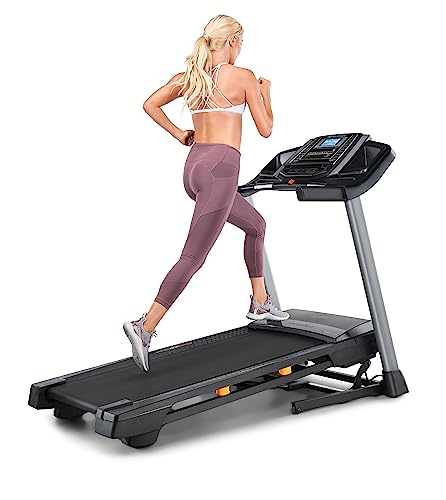The Complete List Of Non Powered Treadmill Dos And Don'ts
The Rise of Non-Powered Treadmills: A Deep Dive into Their Benefits and Features
In a world increasingly concentrated on health, health, and fitness, the alternatives for exercise equipment appear unlimited. Amongst these, non-powered treadmills are acquiring significant traction. Manual Treadmill Cheap , which do not count on electrical power to run, use a special blend of benefits and benefits that cater to a varied audience. This post explores the features, advantages, and factors to consider related to non-powered treadmills, while likewise responding to typical concerns surrounding them.
What is a Non-Powered Treadmill?
A non-powered treadmill, frequently described as a manual treadmill, is a kind of treadmill that is run by the user's motion rather than an electric motor. Users power the belt forward by walking or running, making it a versatile alternative for cardio exercises. Non-powered treadmills are frequently seen in home fitness centers, fitness studios, and rehabilitation centers due to their simplicity and effectiveness.
Comparison: Non-Powered vs. Powered Treadmills
To comprehend the growing appeal of non-powered treadmills, it's vital to compare them against their powered counterparts. The table below highlights some essential distinctions:
Feature
Non-Powered Treadmill
Powered Treadmill
Power Source
Manual (user-driven)
Electric (motor-driven)
Cost
Usually more budget-friendly
Frequently more expensive
Maintenance
Low upkeep requires
Greater upkeep requirements
Area Requirements
Generally less large
Can be big and heavy
Incline Adjustment
Manual modifications
Automatic settings offered
Workout Intensity
Variable; depends upon user effort
Constant; speeds set by the user
Threat of Injury
Lower, promotes natural movement
Higher, due to speed settings
Training Benefits of Non-Powered Treadmills
Engagement of Core Muscles: Non-powered treadmills require a higher level of balance and core engagement. Users should support themselves, which in turn includes core strength into the workout.
Natural Running Mechanics: As users propel the tread, they mimic natural running or walking methods, reducing the dangers of injury connected with hectic powered treadmills.
Personalized Speed and Intensity: Because the treadmill counts on user effort, individuals can select their workout rate, making it ideal for both newbies and advanced athletes.
Increased Caloric Burn: Research suggests that users may burn more calories on a non-powered treadmill compared to a powered one at comparable intensities. The reason? Manual treadmills can press the body to work more difficult and to keep a greater level of strength throughout the workout.
Resilience: Non-powered treadmills are normally more rugged and constructed to last, with less electronic parts that might fail gradually.
Considerations for Choosing a Non-Powered Treadmill
Before buying, possible buyers need to think about the following features:
Feature
Factors to consider
Weight Limit
Guarantee it matches your body type and needs
Belt Size
A larger belt can provide more comfort, particularly for running
Incline Settings
Look for options to adjust incline for differing exercise intensity
Frame Construction
Choose long lasting materials that can withstand rigorous usage
Mobility
Think about designs that are simple to move or save out of the method
Often Asked Questions (FAQ)
1. Are non-powered treadmills ideal for everyone?Yes, these treadmills are typically suitable for users of all physical fitness levels. Nevertheless, people with specific health issues need to seek advice from a doctor before starting any brand-new workout program.
2. Just how much do non-powered treadmills cost?Prices can differ extensively, generally varying from ₤ 200 to upwards of ₤ 2,000 based upon quality and features. Manual alternatives tend to be more budget friendly than powered variations.
3. How do I preserve a non-powered treadmill?Upkeep tends to be minimal; merely ensure that the belt is clean and check for wear and tear periodically. It's likewise essential to keep moving parts oiled for smooth operation.
4. Can I run or stroll on a non-powered treadmill?Yes, non-powered treadmills are designed for both walking and running. Users can change their exercise strength based on speed and stride.
5. Do I need to adjust the incline by hand?Yes, the majority of non-powered treadmills need manual adjustments for incline modifications, enabling users to differ their workouts as desired.
The non-powered treadmill stands as a practical and efficient workout solution, ideal for those aiming to improve their workout regimen without the complexities of powered machines. By providing an extensive workout that engages the core and works the body holistically, these treadmills are developed to produce an efficient cardio experience that caters to all fitness levels. Their price, durability, and overall efficiency for calorie burning add to their rise in popularity.
Whether you are a seasoned athlete searching for a harder workout or a beginner taking those primary steps towards fitness, non-powered treadmills provide an inviting option to the standard electric treadmill. With the added benefit of lower maintenance and expense, they deserve consideration on your fitness journey.
